Electromagnets vs. Permanent Magnets: What's Difference?
Magnets play a crucial role in modern technology and everyday life, from powering electric motors to storing data in hard drives. Two common types of magnets are electromagnets and permanent magnets, each with its unique characteristics and applications. Understanding the differences between these two types of magnets is crucial for choosing the right magnet for various industrial and technological needs.
-
Explain why understanding the differences between electromagnets and permanent magnets is crucial
-
Key Differences Between Electromagnets and Permanent Magnets
1. Importance of Magnets in Technology and Everyday Life
Magnets play a crucial role in our modern world, seamlessly integrating into both technology and daily routines. These powerful materials, whether in the form of electromagnets or permanent magnets, provide essential functionality in a myriad of applications. From the simplicity of holding notes on a refrigerator to the complexities of powering electric vehicles, magnets are the unsung heroes behind many innovations.
In the realm of technology, magnets are indispensable. They are the backbone of electric motors, which are used in countless devices, from household appliances to industrial machinery. For instance, permanent magnets are widely used in small motors found in everyday gadgets like fans, blenders, and computers. On the other hand, electromagnets excel in applications requiring variable strength and can be found in electric cars, MRI machines, and particle accelerators.
Moreover, magnets are essential in the field of electronics. Permanent magnets are a key component in hard drives and speakers, converting electrical energy into mechanical motion and vice versa. Without magnets, the digital world as we know it would grind to a halt. The data stored on your computer or the music played through your earphones all relies on the precise and reliable functioning of these magnetic components.
In everyday life, the impact of magnets extends beyond technology. They are pivotal in various household items and conveniences. For example, the magnetic latches on cabinet doors keep them securely closed, while magnetic strips on credit cards store vital information for transactions. These simple yet effective uses highlight how magnets make our daily routines more efficient and seamless.
The significance of magnets also spans into the realm of renewable energy. Wind turbines, for example, utilize permanent magnets in their generators to convert kinetic energy from the wind into electricity. Similarly, solar power systems often employ electromagnets in inverters to efficiently convert solar energy into a usable power source for homes and businesses. These applications not only underscore the versatility of magnets but also their crucial role in sustainable energy solutions.
In the industrial sector, magnets are invaluable in automation and manufacturing processes. They enable the operation of conveyor belts, robotic arms, and other machinery that require precise control and movement. Electromagnets in particular are essential in lifting and moving heavy metal objects, streamlining production, and enhancing safety in factories.
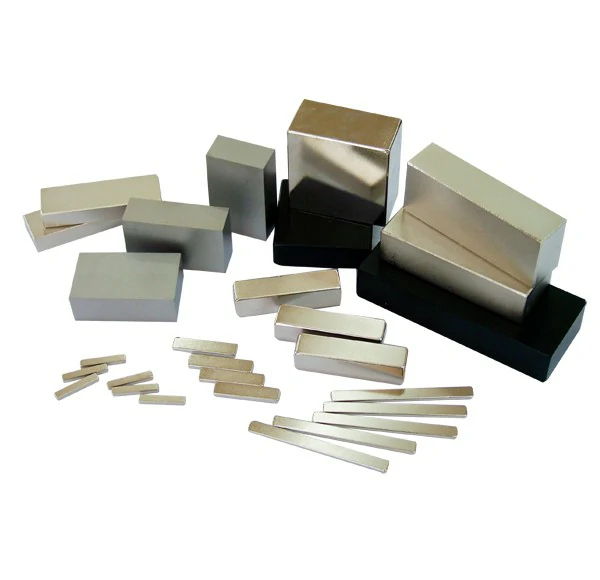
2. Explain Why Understanding the Differences Between Electromagnets and Permanent Magnets Is Crucial
In the world of modern technology and industrial applications, distinguishing between electromagnets and permanent magnets is not merely academic—it is essential for making informed decisions in engineering, manufacturing, and product development. Each type of magnet offers unique properties and advantages that are crucial for specific applications. Understanding these differences allows engineers and decision-makers to optimize performance, efficiency, and cost-effectiveness in various technological and industrial settings.
Permanent magnets, as the name suggests, generate a persistent magnetic field without the need for external power. This characteristic makes them incredibly valuable in applications where a constant magnetic force is required. For example, they are widely used in small electric motors, sensors, and magnetic holding devices. Their ability to maintain a magnetic field without external energy makes them highly efficient and reliable for continuous use.
On the other hand, electromagnets are magnets that only generate a magnetic field when an electric current is applied. This unique feature allows them to offer adjustable magnetic strength, which can be controlled dynamically by varying the current flow. This flexibility is particularly beneficial in applications such as electric cranes, where the ability to switch the magnetic field on and off enables efficient handling of ferrous materials. Additionally, electromagnets are crucial in medical imaging devices like MRI machines, where varying magnetic fields are required to generate detailed images.
One of the critical distinctions between these two types of magnets lies in their cost and application-specific advantages. Permanent magnets tend to have lower initial costs and are ideal for applications that require a steady, non-variable magnetic field. In contrast, electromagnets often incur higher costs due to their need for power and control systems, but they provide unmatched flexibility and power in applications where changing the magnetic field is necessary.
Understanding the functional differences between these magnets is crucial for selecting the right type for specific applications. For example, in the realm of renewable energy, wind turbines commonly use permanent magnets to generate electricity efficiently with minimal maintenance, while electromagnets may be employed in the control systems for dynamic adjustments. Similarly, in the automotive industry, electric vehicles often rely on electromagnets for their motor systems to allow for precise control over the vehicle's speed and torque.
Moreover, understanding the material properties and limitations of each type of magnet can lead to better design choices. Permanent magnets are typically made from materials like neodymium, which offer strong magnetic fields but may be prone to demagnetization under high temperatures. In contrast, electromagnets can be designed to handle higher temperatures and are less susceptible to demagnetization, making them ideal for high-heat environments.
From a marketing perspective, understanding these differences also aids in highlighting the benefits of each magnet type to potential customers. For instance, businesses involved in heavy machinery can emphasize the operational advantages of electromagnets for lifting and moving heavy metals, while consumer electronics manufacturers might focus on the compact and efficient use of permanent magnets in their products.
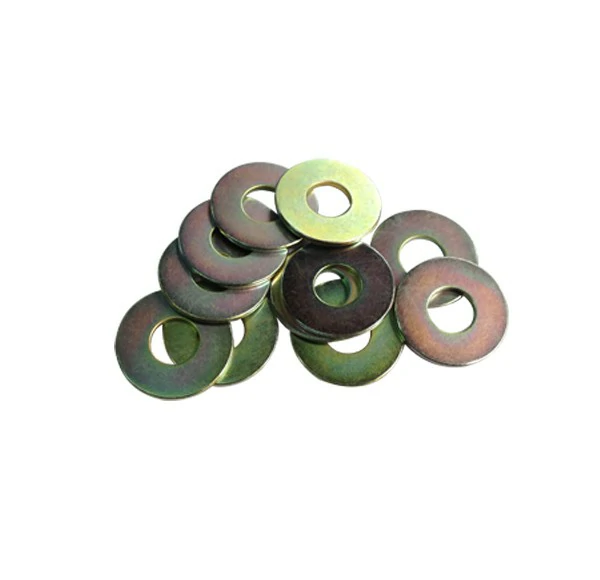
3. What Are Permanent Magnets?
Permanent magnets are a type of magnet that maintains a persistent magnetic field without the need for an external power source. This characteristic sets them apart from electromagnets, which require an electric current to generate a magnetic field. Permanent magnets are found in various applications, from simple household items to sophisticated industrial machinery, making them indispensable in modern technology and everyday life.
The magnetic field in a permanent magnet is created by the alignment of magnetic domains within the material. These domains are regions where the magnetic moments of atoms are aligned in the same direction. When these domains are aligned during the magnetization process, the material exhibits a strong, continuous magnetic field. This property is what allows permanent magnets to attract ferromagnetic materials like iron, nickel, and cobalt.
Permanent magnets come in various types, each with unique properties and applications. The most common types include neodymium magnets, samarium-cobalt magnets, and ferrite magnets. Each type of magnet has distinct advantages, making it suitable for specific uses:
Neodymium Magnets
Neodymium magnets, also known as NdFeB magnets, are made from an alloy of neodymium, iron, and boron. They are the strongest type of permanent magnets available, offering exceptionally high magnetic strength and coercivity. These properties make them ideal for applications requiring powerful, compact magnets, such as in electric motors, hard drives, and magnetic fasteners. However, they are sensitive to temperature and can corrode easily without protective coatings.
Samarium-Cobalt Magnets
Samarium-cobalt magnets are another type of rare-earth magnet known for their high magnetic strength and resistance to demagnetization and corrosion. These magnets are made from an alloy of samarium and cobalt, which provides excellent thermal stability and durability. This makes them suitable for high-temperature applications and environments where stability and longevity are critical, such as in aerospace and military technologies.
Ferrite Magnets
Ferrite magnets, also known as ceramic magnets, are made from a mixture of iron oxide and ceramic materials. They are less powerful than rare-earth magnets but are cost-effective and resistant to demagnetization and corrosion. Ferrite magnets are widely used in applications where high magnetic strength is not required, such as in refrigerator magnets, loudspeakers, and magnetic separators.
One of the significant advantages of permanent magnets is their ability to maintain a magnetic field indefinitely without the need for external energy. This makes them highly efficient for continuous use in various applications, such as in electric motors where they provide a constant magnetic force to convert electrical energy into mechanical motion. Additionally, permanent magnets are essential in sensors, where they help detect changes in magnetic fields, enabling precise measurements and control in industrial automation and consumer electronics.
In the industrial sector, permanent magnets are crucial for applications that require reliable and durable magnetic fields. For example, they are used in magnetic separators to remove ferrous contaminants from materials, ensuring product purity and safety in food processing, mining, and recycling industries. Similarly, they play a key role in magnetic bearings and couplings, where they reduce friction and wear, enhancing the efficiency and lifespan of machinery.
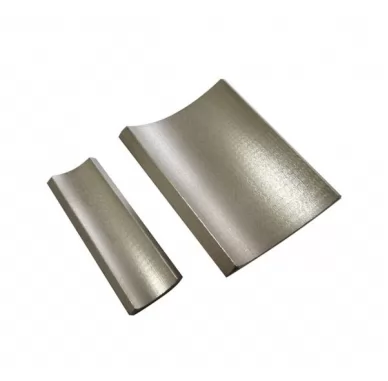
4. Unique Features of Permanent Magnets
Permanent magnets possess several unique features that make them indispensable in various technological and industrial applications. Unlike electromagnets, which require a continuous power source to generate a magnetic field, permanent magnets generate a consistent magnetic field on their own. This fundamental difference endows them with several distinct advantages and characteristics that are crucial for many applications. Let’s delve into the unique features that set permanent magnets apart.
4.1 Constant Magnetic Field Without External Power
One of the most significant features of permanent magnets is their ability to maintain a constant magnetic field without the need for an external power source. This makes them highly energy-efficient, as they do not consume electricity to generate or sustain their magnetic field. This self-sustaining property is essential for applications where a continuous and reliable magnetic field is required, such as in magnetic separators and magnetic locks.
4.2 High Coercivity and Resistance to Demagnetization
Permanent magnets exhibit high coercivity, meaning they have a strong resistance to being demagnetized. This feature is particularly important in applications where the magnet may be exposed to external magnetic fields or high temperatures, which could otherwise weaken its magnetic strength. For instance, neodymium magnets are known for their high coercivity, making them ideal for high-performance applications such as in electric motors and wind turbines.
4.3 Long-Term Stability and Durability
Another unique feature of permanent magnets is their long-term stability and durability. Once magnetized, they retain their magnetic properties over long periods, making them highly reliable for applications that require a stable and enduring magnetic field. This long-term stability is crucial in applications such as magnetic bearings and sensors, where consistent performance over many years is required.
4.4 Versatile Material Composition
Permanent magnets are made from various materials, each offering unique magnetic properties. The most common materials include:
- Neodymium Iron Boron (NdFeB): These are the strongest permanent magnets available, offering high magnetic strength and excellent performance in compact applications.
- Samarium Cobalt (SmCo): Known for their high temperature resistance and stability, these magnets are ideal for use in high-temperature environments.
- Ferrite (Ceramic): These magnets are cost-effective and resistant to corrosion, making them suitable for a wide range of applications where high magnetic strength is not critical.
- Alnico: Combining aluminum, nickel, and cobalt, Alnico magnets offer good temperature stability and are commonly used in sensors and loudspeakers.
This versatility in material composition allows for the customization of permanent magnets to meet specific application requirements, from high-strength applications in aerospace to cost-sensitive uses in consumer electronics.
4.5 Application Flexibility
The unique features of permanent magnets provide significant application flexibility. They are used in a wide range of industries, including:
- Automotive: Permanent magnets are critical in electric vehicle motors, sensors, and braking systems.
- Consumer Electronics: They are used in speakers, headphones, and mobile devices for compact and efficient magnetic applications.
- Industrial Machinery: Permanent magnets are employed in magnetic separators, holding devices, and rotary machines.
- Medical Devices: They are used in MRI machines, medical sensors, and therapeutic devices due to their reliable and stable magnetic fields.
- Renewable Energy: In wind turbines and other energy systems, they are essential for efficient energy conversion and operation.
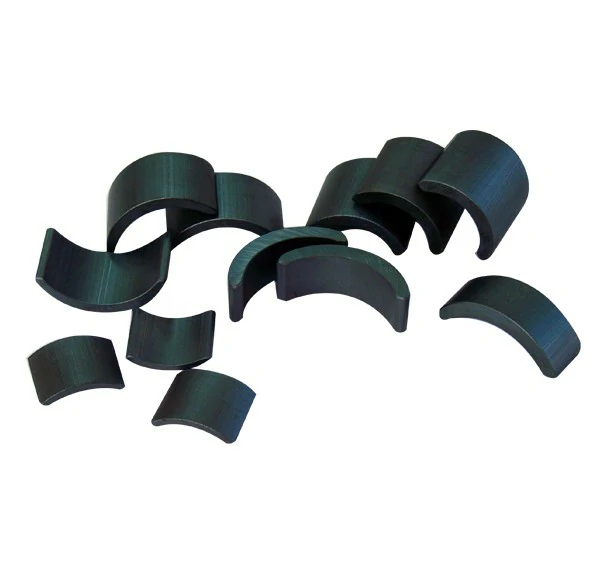
5. Types of Permanent Magnets
Permanent magnets come in various types, each with unique properties and applications. Understanding the different types of permanent magnets is crucial for selecting the right magnet for specific industrial, commercial, or technological applications. In this section, we will explore the most common types of permanent magnets: Neodymium magnets, Samarium-Cobalt magnets, Alnico magnets, and Ferrite magnets. Let’s examine their composition, properties, and typical uses.
5.1 Neodymium Magnets
Neodymium magnets, also known as NdFeB magnets, are the strongest type of permanent magnets available today. They are made from an alloy of neodymium, iron, and boron, and are part of the rare earth magnet family.
5.1.1 Composition and Properties
Neodymium magnets are composed of neodymium (Nd), iron (Fe), and boron (B), forming a crystalline structure that contributes to their extraordinary magnetic strength. Their properties include:
- High Magnetic Strength: They have the highest magnetic field strength among all permanent magnets, making them suitable for high-performance applications.
- Excellent Energy Density: Their high energy density allows them to be used in compact applications where space is limited.
- Temperature Sensitivity: While they are powerful, they are sensitive to high temperatures and may lose some of their magnetic properties if exposed to temperatures above 80-200°C, depending on their grade.
- Prone to Corrosion: Neodymium magnets can corrode easily, so they are often coated with nickel, zinc, or epoxy to protect them from environmental damage.
5.1.2 Common Applications
Due to their powerful magnetic properties and compact size, Neodymium magnets are widely used in various industries and applications, such as:
- Electric Motors: Essential in electric vehicles and wind turbines for efficient energy conversion.
- Medical Devices: Used in MRI machines and other medical equipment due to their strong and stable magnetic fields.
- Consumer Electronics: Found in hard drives, speakers, and mobile devices for their compact size and high performance.
- Magnetic Fasteners: Used in various fastening and holding applications in manufacturing and construction.
5.2 Samarium-Cobalt Magnets
Samarium-Cobalt magnets, or SmCo magnets, are another type of rare earth magnet known for their high temperature stability and resistance to oxidation.
5.2.1 Characteristics and Uses
Samarium-Cobalt magnets are made from an alloy of samarium (Sm) and cobalt (Co). They are characterized by:
- High Temperature Stability: They maintain their magnetic properties at temperatures up to 350°C, making them ideal for high-temperature applications.
- Excellent Corrosion Resistance: They are highly resistant to oxidation and corrosion, often eliminating the need for protective coatings.
- High Magnetic Strength: While not as strong as Neodymium magnets, they still offer substantial magnetic force and are stable over a wide range of conditions.
- Brittleness: Samarium-Cobalt magnets are brittle and can fracture easily, so they must be handled with care during manufacturing and assembly.
Common applications for Samarium-Cobalt magnets include:
- Aerospace: Used in aircraft and spacecraft components due to their stability in extreme conditions.
- Military: Employed in advanced military technologies that require high performance in varied environments.
- Automotive: Used in sensors and actuators where high temperature and stability are required.
- Industrial Motors: Ideal for high-temperature industrial motors and machinery.
5.3 Alnico Magnets
Alnico magnets are composed of aluminum (Al), nickel (Ni), and cobalt (Co), and are known for their excellent temperature stability and good resistance to demagnetization.
5.3.1 Advantages and Limitations
Alnico magnets offer several advantages:
- High Temperature Stability: They can operate at temperatures up to 550°C without losing significant magnetic properties.
- Low Coercivity: Alnico magnets can be easily demagnetized and remagnetized, which can be advantageous in certain applications where the magnetic field needs to be adjusted.
- Good Corrosion Resistance: They resist corrosion and oxidation well, requiring minimal protection against environmental factors.
However, they also have some limitations:
- Lower Magnetic Strength: Compared to Neodymium and Samarium-Cobalt magnets, Alnico magnets have lower magnetic strength.
- High Cost: Alnico magnets are more expensive to produce than some other types of permanent magnets, such as Ferrite magnets.
5.3.2 Common Applications
Alnico magnets are commonly used in applications where high temperature stability and reliable performance are critical, including:
- Electronics: Used in sensors, microphones, and other electronic components.
- Instrumentation: Ideal for measuring devices and instruments that require stable magnetic fields.
- Magnetic Separators: Employed in the separation of ferrous materials in recycling and mining industries.
- Motors: Used in electric motors and generators that operate under high temperature conditions.
5.4 Ferrite Magnets
Ferrite magnets, also known as ceramic magnets, are made from a mixture of iron oxide and barium or strontium carbonate. They are widely used due to their low cost and good magnetic properties.
5.4.1 Composition and Characteristics
Ferrite magnets are characterized by:
- Cost-Effective: They are inexpensive to produce, making them ideal for large-scale applications.
- Good Magnetic Strength: While not as powerful as rare earth magnets, they provide adequate magnetic strength for many applications.
- High Resistance to Demagnetization: Ferrite magnets have high coercivity, making them resistant to demagnetization.
- Brittle Nature: Like other ceramic materials, Ferrite magnets are brittle and can break if not handled properly.
5.4.2 Common Applications
Ferrite magnets are used in a variety of applications due to their affordability and adequate performance, such as:
- Loudspeakers: Commonly used in speaker systems due to their good magnetic properties and low cost.
- Magnetic Assemblies: Used in various magnetic assemblies and holding applications in manufacturing.
- Magnetic Strip and Sheet: Employed in refrigerator doors, magnetic toys, and other consumer products.
- Electric Motors: Found in small electric motors, especially in cost-sensitive applications.
6. Cost-effectiveness and Applications
The cost-effectiveness of permanent magnets is a critical consideration for industries looking to balance performance and budget. Different types of permanent magnets vary significantly in terms of cost, magnetic properties, and application suitability. Understanding these differences can help industries make informed choices about which magnets to use in specific applications. In this section, we will explore the cost-effectiveness and applications of various types of permanent magnets.
6.1 Neodymium Magnets
Neodymium magnets are among the most powerful permanent magnets available, but they are also relatively expensive due to their complex manufacturing process and the cost of rare earth materials.
6.1.1 Cost-effectiveness
Despite their high initial cost, Neodymium magnets offer excellent cost-effectiveness for applications where high magnetic strength is critical, and size or weight constraints are significant. Their high energy density allows for the miniaturization of devices and systems, which can result in overall cost savings in manufacturing and operation.
6.1.2 Applications
The powerful magnetic properties of Neodymium magnets make them ideal for a variety of high-performance applications, including:
- Electric Motors and Generators: Used in high-efficiency motors and generators in electric vehicles, wind turbines, and industrial machinery.
- Medical Devices: Essential in MRI machines and other medical imaging equipment for their stable and strong magnetic fields.
- Consumer Electronics: Used in compact and efficient components for smartphones, computers, and audio equipment.
- Magnetic Couplings: Ideal for non-contact magnetic couplings in pumps and mixers where contamination must be avoided.
6.2 Samarium-Cobalt Magnets
Samarium-Cobalt magnets are known for their high-temperature stability and resistance to corrosion, making them suitable for extreme environments. However, they are more expensive than Neodymium magnets due to the cost of Samarium and Cobalt materials.
6.2.1 Cost-effectiveness
While Samarium-Cobalt magnets are costly, their long-term performance in high-temperature and corrosive environments justifies the expense. Their stability and reliability reduce the need for frequent replacements and maintenance, resulting in lower total cost of ownership over time.
6.2.2 Applications
Due to their excellent temperature and corrosion resistance, Samarium-Cobalt magnets are used in applications that require durability and stability under extreme conditions, such as:
- Aerospace: Utilized in aircraft and spacecraft components that must withstand high temperatures and harsh conditions.
- Military Equipment: Employed in advanced weaponry and defense systems for reliable performance under extreme conditions.
- Automotive Sensors: Used in temperature-critical sensors and actuators in modern vehicles.
- Industrial Applications: Ideal for high-temperature industrial motors and magnetic separators.
6.3 Alnico Magnets
Alnico magnets are known for their high-temperature stability and excellent corrosion resistance. They are more affordable than rare earth magnets, making them a cost-effective option for specific applications.
6.3.1 Cost-effectiveness
Alnico magnets provide a balance between cost and performance. Their relatively low price and durability make them a good choice for applications where high temperature stability and resistance to corrosion are more critical than magnetic strength.
6.3.2 Applications
Alnico magnets are commonly used in applications that require consistent performance over a wide temperature range, including:
- Instrumentation: Used in various measuring instruments and devices where stable magnetic fields are essential.
- Electric Motors: Suitable for motors that operate at high temperatures, such as those found in industrial machinery and automotive applications.
- Magnetic Separators: Employed in industries like recycling and mining for separating ferrous materials from non-ferrous materials.
- Sensors: Used in various types of sensors that require high stability across different temperatures.
6.4 Ferrite Magnets
Ferrite magnets are the most cost-effective type of permanent magnets due to their low production costs and the abundance of raw materials. They are less powerful than rare earth magnets but offer sufficient magnetic strength for many applications.
6.4.1 Cost-effectiveness
Ferrite magnets are extremely cost-effective for applications that do not require high magnetic strength. Their low price makes them an excellent choice for large-scale applications where budget constraints are a primary concern.
6.4.2 Applications
The affordability and adequate performance of Ferrite magnets make them suitable for a wide range of applications, such as:
- Loudspeakers: Commonly used in speaker systems due to their good magnetic properties and low cost.
- Magnetic Assemblies: Used in various magnetic assemblies and holding applications in manufacturing.
- Magnetic Strip and Sheet: Employed in refrigerator doors, magnetic toys, and other consumer products.
- Electric Motors: Found in small electric motors, especially in cost-sensitive applications.
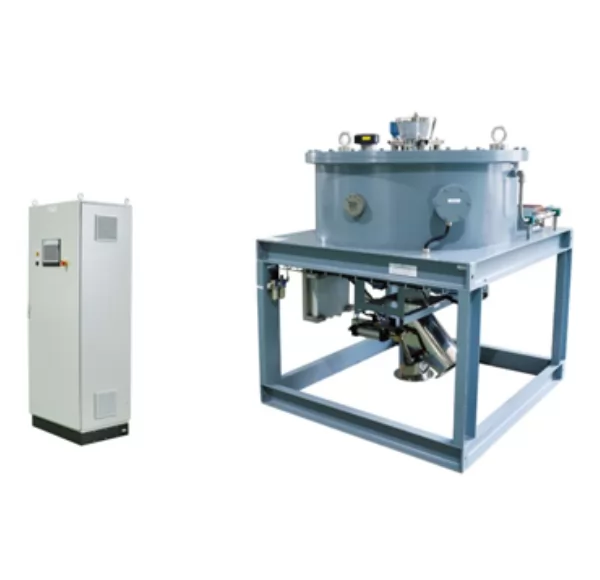
7. What are Electromagnets?
Electromagnets are a fascinating and versatile category of magnets that have revolutionized various industries and technologies. Unlike permanent magnets, which produce a constant magnetic field, electromagnets generate a magnetic field only when an electric current flows through them. This unique property makes them invaluable for applications where magnetic field control is essential.
7.1 Definition and Basic Principles
An electromagnet is a type of magnet in which the magnetic field is produced by the flow of electric current. The core of an electromagnet is typically made of ferromagnetic materials like iron, which enhances the magnetic field generated by the current. The basic principle behind an electromagnet is Ampere's law, which states that a current flowing through a wire creates a magnetic field around it.
The strength and direction of the magnetic field produced by an electromagnet can be controlled by adjusting the current's magnitude and direction. This ability to turn the magnetism on and off and to change its intensity makes electromagnets extremely useful in a wide range of applications.
7.2 How Electromagnets Work
The working principle of electromagnets is straightforward but powerful. When an electric current passes through a coiled wire, it creates a magnetic field. This field is similar to that produced by a bar magnet but can be much stronger, especially if the wire is wound into a tight coil around a ferromagnetic core.
Here’s a step-by-step explanation of how an electromagnet works:
- Current Flow: When an electric current flows through the wire, it generates a magnetic field around the wire. This field is aligned with the direction of the current.
- Coil Formation: By winding the wire into a coil, the magnetic fields of each loop of wire add together, significantly increasing the overall magnetic field strength.
- Core Enhancement: Placing a ferromagnetic material, such as an iron core, inside the coil further amplifies the magnetic field. The core becomes magnetized by the current-induced field, making the electromagnet much more powerful.
- Control of Magnetism: The magnetic field can be easily controlled by adjusting the electric current. Increasing the current strengthens the magnetic field, while decreasing the current weakens it. Reversing the current's direction changes the polarity of the magnetic field.
This controllability allows electromagnets to be used in applications where variable magnetic fields are required, providing flexibility that permanent magnets cannot offer.
7.3 Advantages of Electromagnets
Electromagnets offer several key advantages over permanent magnets, making them indispensable in many modern technologies:
- Magnetic Field Control: The ability to turn the magnetic field on and off, as well as adjust its strength, provides significant flexibility and precision in applications where varying magnetic forces are needed.
- High Magnetic Strength: Electromagnets can produce much stronger magnetic fields than most permanent magnets, especially when a strong electric current is used.
- Polarity Reversal: The magnetic polarity of an electromagnet can be easily reversed by changing the direction of the current, allowing for diverse and complex applications.
- Versatility: Electromagnets can be designed in various shapes and sizes to suit specific needs, from tiny devices used in medical applications to large-scale industrial machinery.
7.4 Applications of Electromagnets
Electromagnets play a crucial role in numerous applications across different industries. Their ability to generate controllable and powerful magnetic fields makes them ideal for:
- Electric Motors and Generators: Electromagnets are fundamental components in electric motors and generators, converting electrical energy into mechanical energy and vice versa.
- Magnetic Levitation: Used in maglev trains and other transportation technologies, electromagnets enable frictionless travel by lifting and propelling vehicles with magnetic forces.
- Magnetic Resonance Imaging (MRI): Essential in medical imaging, electromagnets generate strong and uniform magnetic fields to create detailed images of the human body.
- Electromagnetic Relays and Switches: Used in electrical and electronic circuits to control the flow of current and operate as switches in various devices.
- Industrial Lifting and Material Handling: Powerful electromagnets are used in scrapyards and manufacturing plants to lift and transport heavy ferrous materials.
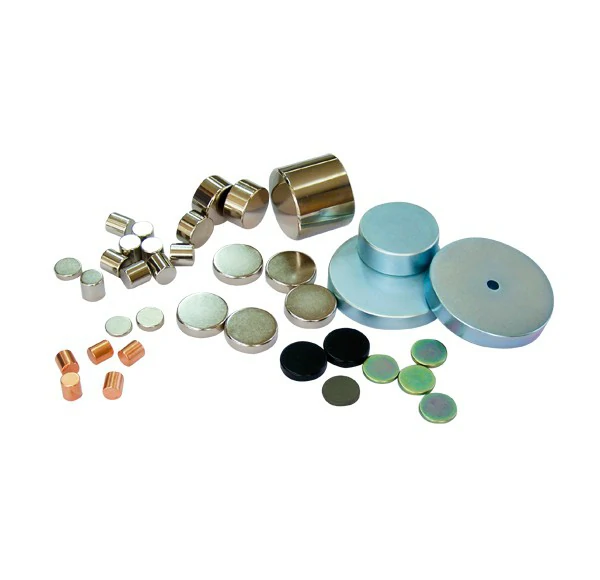
8. Components of Electromagnets
Electromagnets are fascinating devices that rely on a few critical components to function effectively. Understanding these components helps us appreciate how electromagnets can be tailored to specific applications and how they generate powerful and controllable magnetic fields. The primary components of an electromagnet are the core materials, the coils and windings, and the power sources.
8.1 Core Materials: Soft Iron vs. Other Metals
The core material is a crucial part of an electromagnet, significantly impacting its magnetic field strength and efficiency. The core serves as a medium that the magnetic field lines travel through, enhancing the magnet’s performance. The most commonly used materials for electromagnet cores are soft iron and other ferromagnetic metals, each with unique characteristics.
8.1.1 Soft Iron Cores
Soft iron is the preferred core material for many electromagnets because it has high magnetic permeability, meaning it can easily become magnetized. The advantages of using soft iron as a core material include:
- High Magnetic Permeability: Soft iron allows magnetic field lines to pass through it more readily, resulting in a stronger magnetic field.
- Low Retentivity: After the external magnetic field is removed, soft iron loses its magnetism quickly, which is ideal for applications requiring quick magnetic field changes.
- Cost-Effective: Soft iron is relatively inexpensive, making it a cost-effective choice for producing powerful electromagnets.
Soft iron cores are widely used in applications where rapid changes in magnetic field strength are needed, such as in transformers and solenoids.
8.1.2 Other Ferromagnetic Metals
Besides soft iron, other ferromagnetic metals like cobalt, nickel, and various alloys are used as core materials. These materials offer specific benefits depending on the application:
- Cobalt and Nickel: These metals have high magnetic saturation levels, allowing them to support stronger magnetic fields, which is useful in high-performance applications.
- Alloyed Cores: Alloys such as silicon steel are used to reduce energy loss due to eddy currents, which is particularly important in alternating current (AC) applications.
These materials are chosen based on the specific requirements of the electromagnet, such as the desired field strength, response time, and efficiency.
8.2 Coils and Windings
The coils and windings of an electromagnet are the heart of its magnetic field generation. By passing electric current through these coils, a magnetic field is created. The design and material of the coils significantly influence the electromagnet’s performance.
8.2.1 Wire Material and Thickness
Copper is the most common wire material used in electromagnets due to its excellent electrical conductivity and flexibility. The thickness of the wire, or gauge, affects the current capacity and the strength of the magnetic field. Thicker wires can carry more current, leading to a stronger magnetic field, while thinner wires are used for more delicate applications where lower currents are needed.
8.2.2 Coil Configuration
The configuration of the coils also plays a crucial role in determining the characteristics of the magnetic field. There are several common coil configurations:
- Single-Layer Coils: These are the simplest form, with a single layer of wire wound around the core, suitable for low-power applications.
- Multi-Layer Coils: By stacking multiple layers of wire, a more powerful magnetic field can be generated. This configuration is used in applications requiring stronger magnetic forces.
- Helical Coils: These coils are wound in a helical pattern and are used in devices like solenoids, where the magnetic field needs to be concentrated along a specific axis.
The coil configuration is chosen based on the desired magnetic field strength and distribution, as well as the physical space available in the application.
8.3 Power Sources: AC vs. DC
The power source for an electromagnet is another critical component that determines its functionality and efficiency. Electromagnets can be powered by either alternating current (AC) or direct current (DC), each with its advantages and specific applications.
8.3.1 Direct Current (DC)
Direct current is the most commonly used power source for electromagnets, providing a steady and unidirectional flow of electricity. The main benefits of using DC include:
- Stable Magnetic Field: DC provides a consistent magnetic field, which is essential for applications requiring steady magnetic forces, such as in electric motors and lifting devices.
- Simple Control: The magnetic field strength can be easily controlled by adjusting the voltage and current supplied to the electromagnet.
DC-powered electromagnets are ideal for applications where a constant and reliable magnetic field is needed without fluctuations.
8.3.2 Alternating Current (AC)
Alternating current can also be used to power electromagnets, especially in applications where a rapidly changing magnetic field is required. The advantages of using AC include:
- Changing Magnetic Fields: AC creates an oscillating magnetic field, which is beneficial in transformers and induction devices where varying magnetic fields are needed to induce current or voltage changes.
- Reduced Energy Losses: In some applications, such as in high-frequency devices, AC can help reduce energy losses compared to DC.
AC-powered electromagnets are commonly used in devices like transformers, where the alternating magnetic field is used to transfer electrical energy between circuits.
Understanding the components of electromagnets, including core materials, coils, and power sources, allows for the design and implementation of powerful and efficient magnetic systems tailored to various industrial and technological needs. Each component plays a crucial role in the electromagnet's overall performance and its ability to generate and control magnetic fields.
9. Key Differences Between Electromagnets and Permanent Magnets
Electromagnets and permanent magnets are two distinct types of magnets with unique characteristics and applications. Understanding their key differences is crucial for choosing the right magnet for specific needs. Here are the main differences between electromagnets and permanent magnets:
9.1 Source of Magnetism
Permanent magnets derive their magnetism from the intrinsic properties of certain materials, such as iron, nickel, and cobalt. These materials have unpaired electrons that align spontaneously to create a magnetic field. In contrast, electromagnets generate magnetism through the flow of electric current. When current flows through a coil of wire wrapped around a core, it creates a magnetic field around the coil.
9.2 Magnetic Field Strength
Permanent magnets generally have a fixed magnetic field strength determined by the material and its magnetization. In contrast, electromagnets offer greater flexibility in controlling the magnetic field strength. By adjusting the current flow, the magnetic field of an electromagnet can be varied or turned off completely.
9.3 Operational Flexibility
Permanent magnets have a fixed magnetic field orientation and strength, limiting their flexibility in certain applications. Electromagnets, on the other hand, offer controllable magnetic fields that can be adjusted as needed. This flexibility makes electromagnets suitable for a wide range of applications where variable magnetic fields are required.
9.4 Durability and Lifespan
Permanent magnets are known for their longevity and do not require an external power source to maintain their magnetism. In contrast, electromagnets have a limited lifespan and require a continuous supply of electric current to maintain their magnetic field. Additionally, electromagnets may require maintenance to ensure optimal performance.
9.5 Energy Efficiency
Permanent magnets are highly energy efficient since they do not require any energy input to maintain their magnetic field. Electromagnets, on the other hand, consume energy to generate and maintain their magnetic field. The energy consumption of an electromagnet depends on factors such as the current flow and the strength of the magnetic field required.
10. Guidelines for Selecting the Appropriate Type of Magnet
When choosing between electromagnets and permanent magnets for a particular application, several factors should be considered to ensure the magnet meets the requirements of the application. Here are some guidelines for selecting the appropriate type of magnet:
10.1 Application Requirements
Consider the specific requirements of your application, such as the desired magnetic field strength, field orientation, and variability. Electromagnets offer more flexibility in controlling these parameters, while permanent magnets have fixed properties.
10.2 Power Source Availability
Determine whether a continuous power source is available for the magnet. Permanent magnets do not require an external power source, making them suitable for applications where power availability is limited or where energy efficiency is a priority.
10.3 Magnetic Field Control
If the application requires precise control over the magnetic field strength or orientation, an electromagnet may be more suitable. Electromagnets allow for real-time adjustment of the magnetic field, making them ideal for applications where flexibility is essential.
10.4 Cost Considerations
Evaluate the cost implications of each type of magnet, including initial purchase costs, maintenance requirements, and operational costs. Permanent magnets may be more cost-effective in the long run due to their durability and low maintenance requirements.
10.5 Environmental Factors
Consider the environmental conditions of the application, such as temperature, humidity, and exposure to corrosive substances. Permanent magnets are generally more resistant to environmental factors than electromagnets, which may require additional protection or maintenance in harsh environments.
10.6 Application-Specific Considerations
In addition to the general guidelines mentioned above, consider any specific requirements or challenges posed by your application. For example, if your application requires a magnet with high coercivity and resistance to demagnetization, a rare-earth permanent magnet like neodymium may be more suitable than an electromagnet.
10.7 Consultation with Magnet Experts
If you are unsure about the best type of magnet for your application, consider consulting with magnet experts or suppliers. They can provide valuable insights and recommendations based on your specific requirements and help you choose the most suitable magnet for your needs.
Choose Mag-Spring for Your Magnet Needs
When it comes to magnets, Mag-Spring is a leading magnet manufacturer known for its high-quality products and innovative solutions. Whether you need electromagnets or permanent magnets, Mag-Spring has you covered. Visit our website at https://www.mag-spring.com/ to learn more about our products and how we can meet your magnet needs.
Read More:

